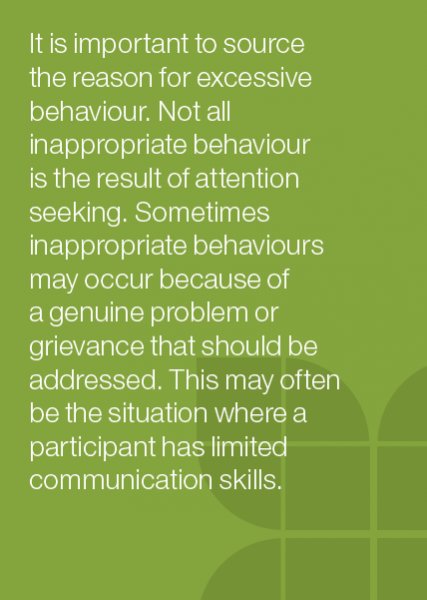A small number of people with a disability are subject to restrictive interventions (such as restraint or seclusion). The Disability Act 2006 provides strong requirements that the rights of these people are protected.
Restraint involves the use of any chemical substance or mechanical means to restrict a person’s freedom of movement.
Seclusion involves the sole confinement of a person at any hour of the day or at night in a room of which the doors and windows are locked from the outside.
The appointment of a Senior Practitioner is a key part of the Disability Act, to ensure that people’s rights are protected when these practices are used. The Senior Practitioner will also ensure that appropriate standards are met in relation to these practices.
The Senior Practitioner has extensive powers and can investigate and direct service providers to either stop or undertake a practice.
The Act has specific requirement for the use of restraint and seclusion. They cannot be used unless the following criteria are met:
- The program provider is approved to use restrictive interventions;
- The use of restrictive interventions is included in a behaviour management plan;
- A person who is independent of the service provider has explained the use of restraint or seclusion to the person with a disability and that person has the right to seek a review of the decision by VCAT; and
- The behaviour management plan has been given to the Senior Practitioner.
The Senior Practitioner is responsible for monitoring the use of restraint and seclusion. The Senior Practitioner may also monitor or set guidelines about the use of other restrictive interventions.
The whole area of restrictive interventions is fraught with difficulty. Leaders should only apply it in extreme circumstances involving an emergency situation, and only within the guidelines as set out above.
(Source – Disability Act 2006 summary document)

